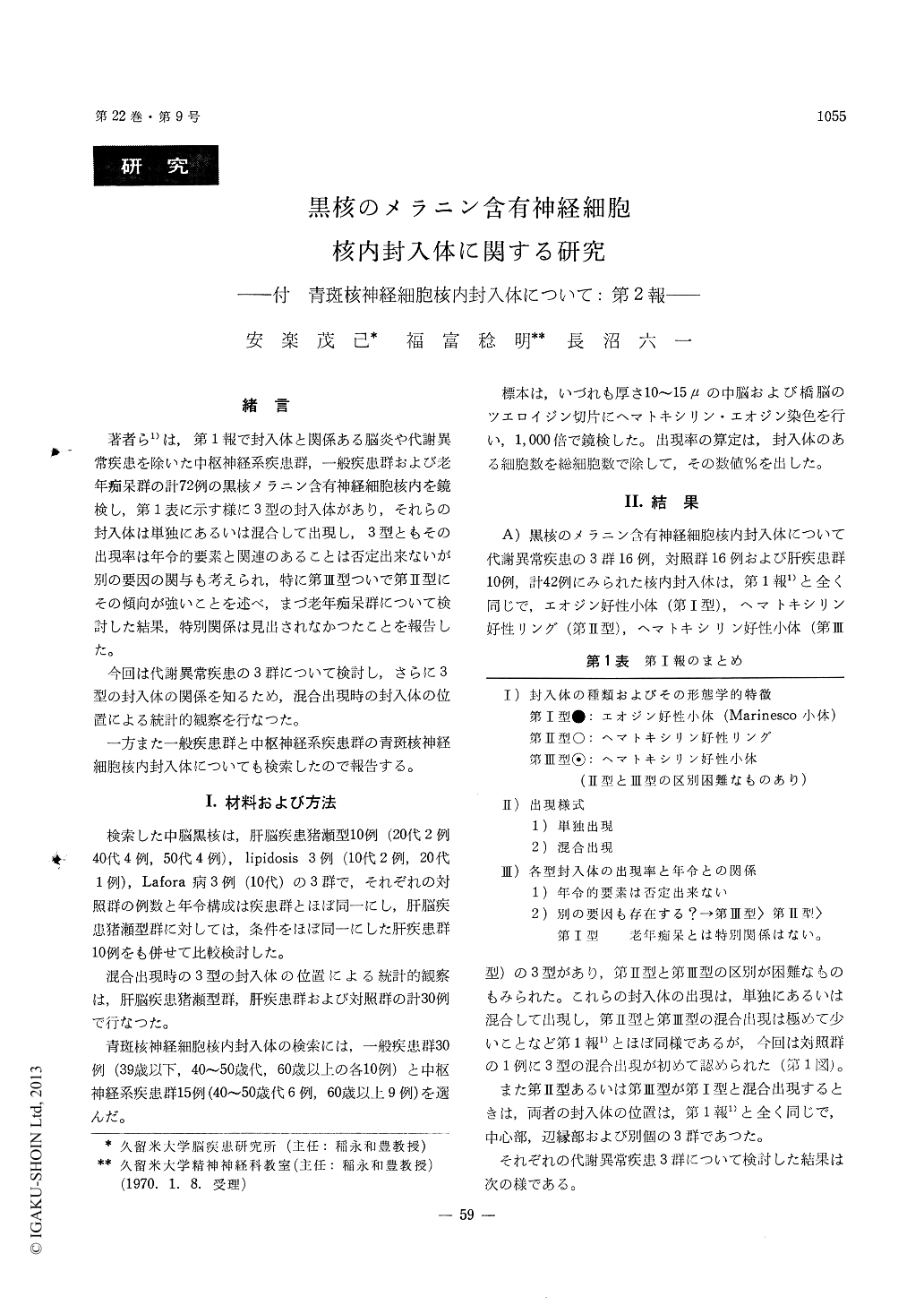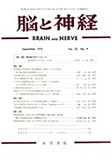Japanese
English
- 有料閲覧
- Abstract 文献概要
- 1ページ目 Look Inside
緒言
著者ら1)は,第1報で封入体と関係ある脳炎や代謝異常疾患を除いた中枢神経系疾患群,一般疾患群および老年痴呆群の計72例の黒核メラニン含有神経細胞核内を鏡検し,第1表に示す様に3型の封入体があり,それらの封入体は単独にあるいは混合して出現し,3型ともその出現率は年令的要素と関連のあることは否定出来ないが別の要因の関与も考えられ,特に第Ⅲ型ついで第Ⅱ型にその傾向が強いことを述べ,まづ老年痴呆群について検討した結果,特別関係は見出されなかつたことを報告した。
今回は代謝異常疾患の3群について検討し,さらに3型の封入体の関係を知るため,混合出現時の封入体の位置による統計的観察を行なつた。
A) In 10 cases of "Inose type" of hepatocerebral disease, 3 cases of lipidosis, and 3 cases of Lafora's disease, investigation was made on 3 types of the intranuclear inclusions of the melanin-pigmented nerve cells of the substania nigra, and the following results were obtained :
1) In the group of "Inose type" of hepatocere-bral disease, as in other group of liver disease, in-clusion bodies of Types I and III appeared about half as many again as in controls, and Type I sho-wed a slightly higher rate of appearance than Type III, and was most frequent.
2) In the groups of lipidosis and Lafora's disease mostly composed of teen-agers all the 3 types ap-peared in a higher rate than in controls and Type III was most frequent in both groups. In the groups of their controls Type III was also most abundant, but Type I was fewest in number. From this, it may be assumed that the appearance of Type III is due to other factors than the increasing age.
3) In 10 cases of "Inose type" of hepatocerebral disease, 10 cases of liver disease, and 10 cases of controls, in total 30 cases, when Types II and III appeared intermingled with Type I, the frequency of appearance examined depending on the site of these inclusions revealed that a mixed appearance was predominant in the central and peripheral parts, there being little difference between these parts, and that a separately mixed appearance was lowest in rate in any groups.
B) Regarding the intranuclear inclusions of the nerve cells of the nucleus loci coerulei, 30 cases of the general disease and 15 cases of central nervous system diseases, total 45 cases, were examined. The results obtained are as follows :
1) As inclusions only eosinophil bodies (Type I) and hematoxylinophil rings (Type II) were demon-strated.
2) Only in 10 out of 45 cases the above-mentioned inclusions were confirmed, of which in 6 case a single appearance of Type I was present, in 3 cases a single appearance of Type II, and only in the remaining 1 a mixed appearance.

Copyright © 1970, Igaku-Shoin Ltd. All rights reserved.


